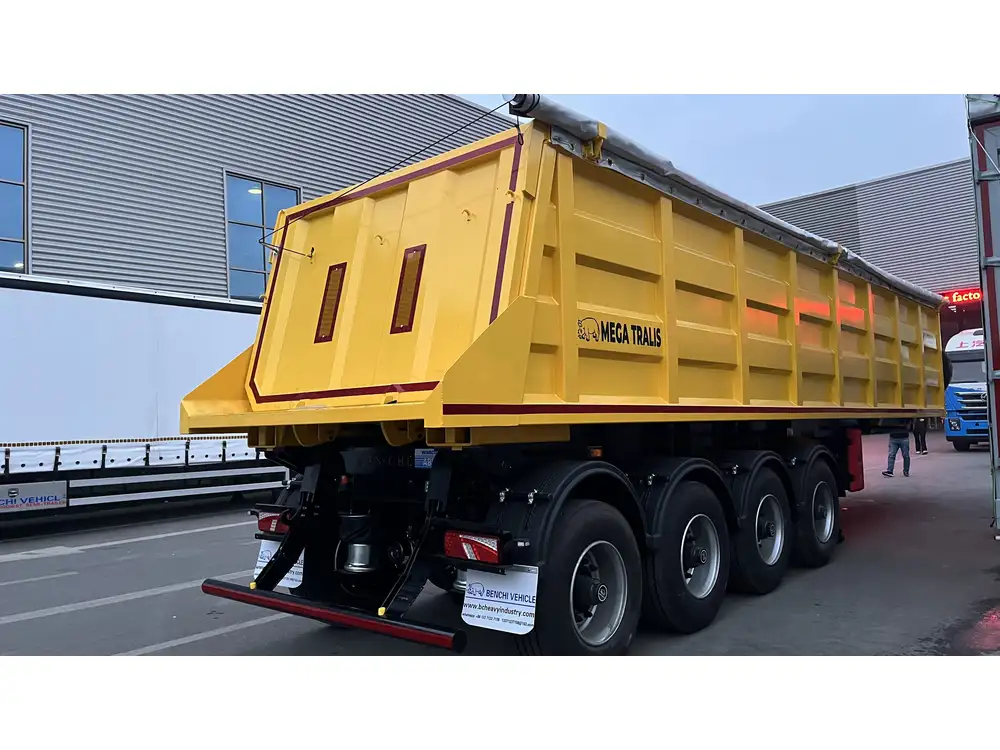Overview of Semi Trailer Detachment Systems
Semi trailers, an essential component in the transportation industry, play a crucial role in hauling freight across vast distances. Understanding how semi trailers detach from tractors is paramount for safety and efficiency. In this guide, we delve into the mechanisms behind detachment, common issues faced, and best practices formulated to ensure a smooth and secure disconnection process.
The Basics of Semi Trailer Coupling Systems
Semi trailers utilize coupling systems designed to securely attach the trailer to a truck’s fifth wheel. This sophisticated mechanism comprises multiple elements:
- Fifth Wheel Coupling: A substantial steel plate that connects the trailer’s kingpin to the truck.
- Kingpin: A cylindrical steel pin that extends from the trailer’s front, fitting into the fifth wheel.
- Locking Mechanism: Often spring-loaded, this feature ensures the kingpin remains securely fastened while in transit.

Types of Coupling Systems
Fixed Couplings:
These provide a solid connection allowing minimal movement, ideal for stability during heavy loads.Sliding Couplings:
Allow for longitudinal adjustments, crucial for weight distribution and maneuverability.Pneumatic Systems:
Employ air pressure for the connection and disconnection process, reducing manual effort.
| Coupling Type | Description | Best Use Case |
|---|---|---|
| Fixed | Rigid connection without flexibility | Heavy loads, stability focus |
| Sliding | Adjustable, helps in balance while turning and loading | Diverse payload transportation |
| Pneumatic | Air-pressured coupling for seamless detachment | Quick stops, frequent changes |
Step-By-Step Process for Semi Trailer Detachment
Understanding the detachment process is key for any operator. Here’s a meticulously structured procedure to facilitate safe and efficient disengagement:
Preparation Before Detachment
- Inspection of Surroundings: Ensure that the area around the trailer is clear of obstacles.
- Checking the Valve: Confirm that the air brake system is adequately set, ensuring stability.
Securing the Trailer
- Engaging the Handbrake: Always engage the trailer’s handbrake to prevent rolling.
- Chalking the Wheels: Use wheel chocks if on an incline to enhance stability.
Disengaging Air Supply
- Disconnecting Airlines: Carefully disconnect the air supply lines and electrical connections to avoid damage.
Releasing the Fifth Wheel Lock
- Using the Release Handle: Pull or push the release handle, ensuring that it’s adequately lifted based on the coupling design.
Pulling Forward
- Gradually Pulling the Tractor: Move the truck forward slowly to disengage; avoid sudden movements that could damage the coupling.
Common Issues Leading to Semi Trailer Detachment Problems
Several factors can complicate the process of detaching a semi-trailer. Awareness of these issues can mitigate risks and enhance safety.

Improper Maintenance
- Worn-out Coupling Components: Regularly check and replace worn parts to avoid unexpected failures.
- Unclean Fifth Wheel: Frequent lubrication and cleaning can prevent sticking and malfunctions.
Operational Mistakes
- Insufficient Brake Engagement: Failure to properly engage the handbrake or chalk can result in trailer movement.
- Ignoring Load Distribution: Unbalanced loads can place undue stress on the coupling mechanism, complicating detachment.
Signs of Potential Issues During Detachment
Recognizing signs of trouble during detachment is crucial. Key indicators may include:
- Resistance While Pulling: If the trailer does not separate smoothly, inspect for issues with the coupling.
- Unusual Sounds: Grinding or scraping noises during the detachment process should raise immediate concerns.
| Indicator | Potential Issue | Recommended Action |
|---|---|---|
| Resistance during detachment | Malfunctioning fifth wheel | Inspect and lubricate components |
| Unusual noises while disengaging | Misalignment or damage to coupling | Halt operation and conduct a check |
| Difficulty in releasing the locking mechanism | Hydraulic or air pressure issue | Verify pressure systems |

Enhanced Safety Protocols for Detachment
Incorporating rigorous safety measures into the detachment process can save time, money, and lives. Here are tactical strategies to improve safety:
- Routine Training: Ensure operators are well-trained in detachment procedures and understand equipment quirks.
- Visual Inspection Protocols: Prior to each journey, confirm the integrity of the braking system, lights, and coupling.
- Establishing a Check-List: Maintain a standard workflow checklist to avoid oversights during detachment.
Tailored Training Programs
Specialized training sessions focusing on:
- Proper Equipment Handling: Understanding how different trailer types and coupling mechanisms function.
- Emergency Procedure Training: Equipping operators to handle detachment problems if they arise.
Advanced Technologies Simplifying Semi Trailer Detachment
Recent advancements in technology have ushered in innovative tools designed to enhance the detachment process. These may include:
- Automated Coupling Systems: Systems that adjust and disconnect automatically, optimizing efficiency and reducing manual effort.
- Digital Monitoring Tools: Sensors that provide real-time data on coupling integrity, potential vulnerabilities, and maintenance reminders.
| Technology | Advantages | Implementation Considerations |
|---|---|---|
| Automated Coupling Systems | Increased efficiency, reduction in human error | Higher initial investment |
| Digital Monitoring Tools | Proactive maintenance and alerts | Requires compatible hardware |

Understanding Legal and Compliance Aspects
When detaching semi trailers, it’s essential to be cognizant of legal requirements and industry regulations. Non-compliance can lead to severe penalties:
- Equipment Standards: Ensure all equipment meets federal and state regulations.
- Driver Licensing: Operators must possess the necessary certifications and training.
Regulatory Bodies and Guidelines
- Federal Motor Carrier Safety Administration (FMCSA): Offers guidelines for safe operations, including trailer maintenance.
- National Highway Traffic Safety Administration (NHTSA): Ensures compliance with safety standards and equipment utilization.
Conclusion: Best Practices for Safe Semi Trailer Detachment
Successfully detaching a semi-trailer requires a blend of technical knowledge, operational competence, and awareness of safety protocols. By adhering to well-structured procedures and embracing modern technology, operators can significantly improve detachment efficiency while ensuring safety for all involved.
In summary, regularly maintaining coupling systems, training personnel, remaining aware of potential issues, and leveraging advanced technologies are essential practices for ensuring a seamless semi trailer detachment process. Through diligence and adherence to these guidelines, we can contribute to a safer, more efficient transportation industry.



